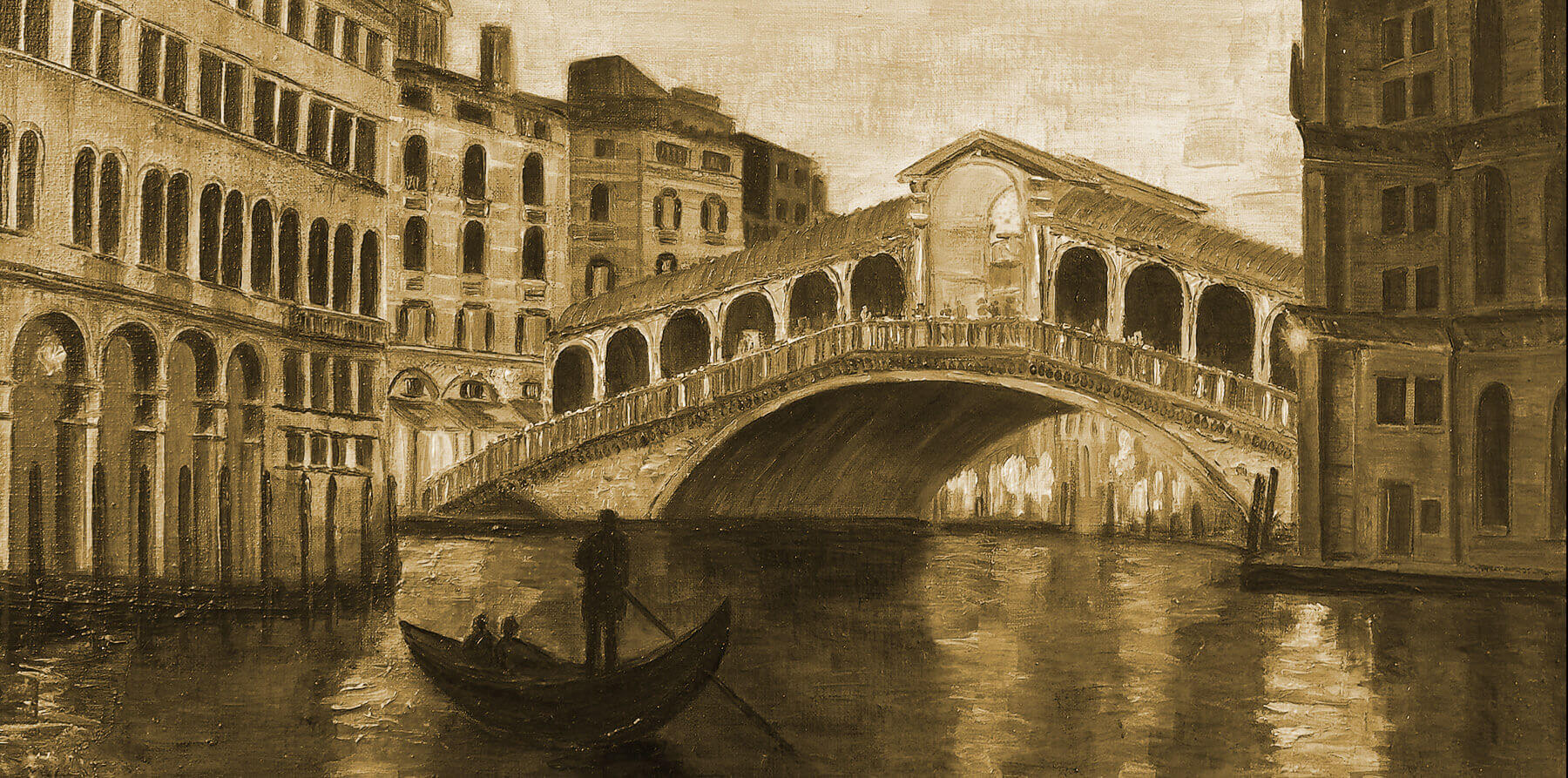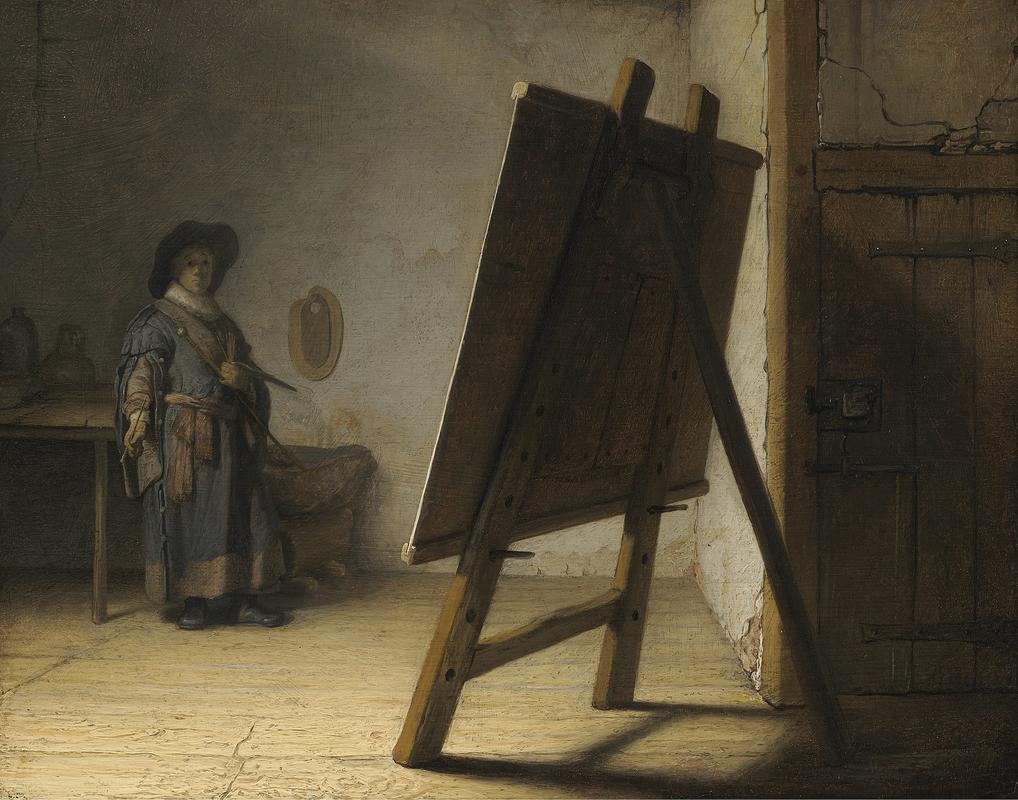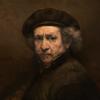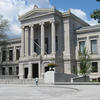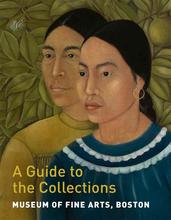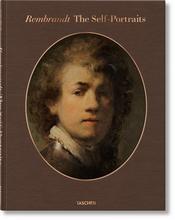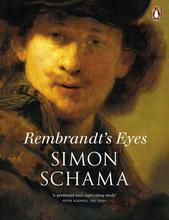More about Artist in His Studio
- All
- Info
- Shop
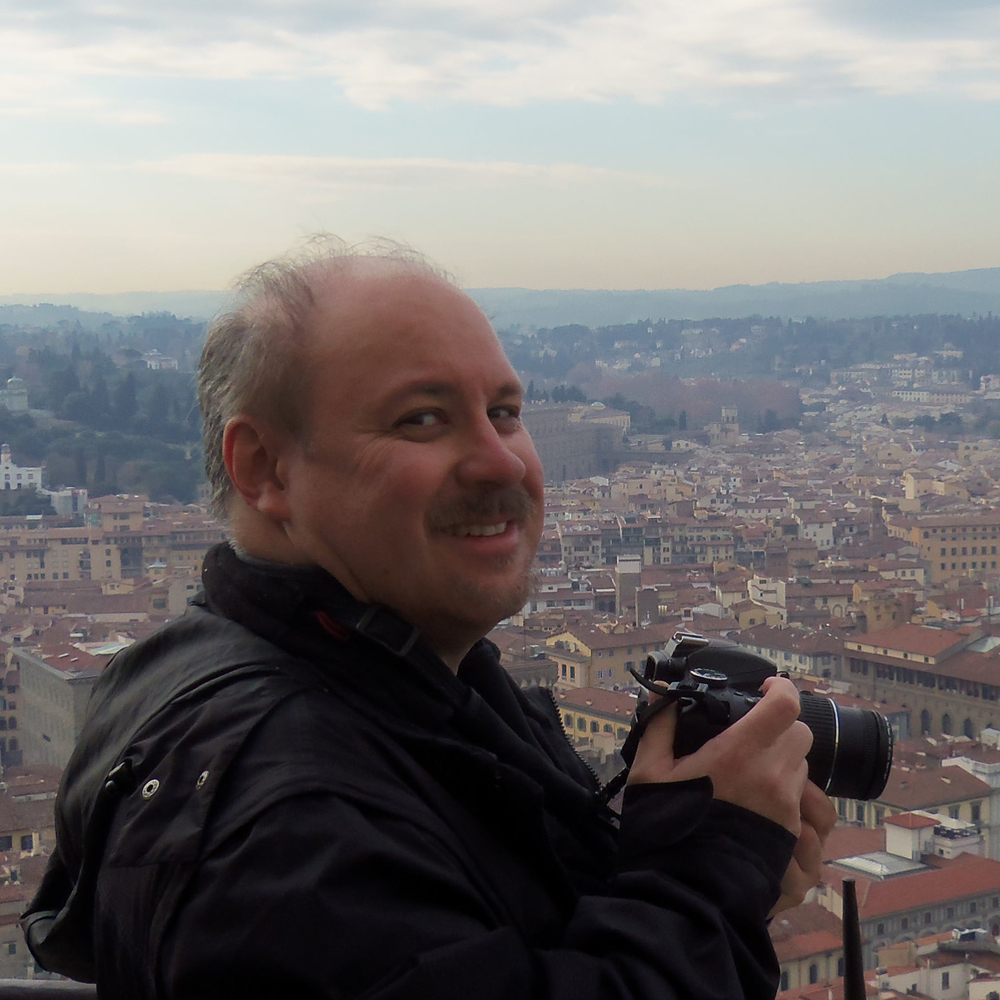
Sr. Contributor
Rembrandt van Rijn loved painting himself; he painted many self-portraits during his lifetime (almost 100!), including himself at work in his studio.
This doesn’t mean he just loved looking at himself, or that he wanted pictures of himself to give as gifts; it’s much likely a matter of economics: painting himself was free, but models need to be paid. However, it’s not quite clear if Artist in his Studio, at the Museum of Fine Arts in Boston, is actually supposed to be Rembrandt himself. The face of the artist in this rather small painting (only 9.75 by 12.5 inches) is pretty vague, to put it mildly. Granted, he painted this as a young artist, around 22 or 23 years of age, but even then, he was already very adept at capturing the details of a subject’s facial features. It’s more likely that the lack of detail on the artist’s face is due to the small scale of the composition, or maybe he really did want the painter, perhaps himself, to remain anonymous.
While we don’t know what the painter is looking at, some have speculated that he hasn’t actually started the painting yet, but he is holding all of his tools as if he has just stepped back for a moment. The artist is probably looking at what he has painted so far, possibly checking to see how it looks in the light, maybe seeing if the perspective is correct; he might even be second-guessing himself on the entire subject.
Getting back to the identity of the artist depicted in the painting, it is also possible that it could be Gerard (or Gerrit) Dou, who was a student in Rembrandt’s studio between 1628 and 1631, and it’s possible Rembrandt could have painted his pupil. Dou painted Rembrandt in his Studio, and although there are still questions about this painting’s attribution, the items in the studio have been linked to Rembrandt, and the face of the artist in this painting is eerily similar to the face in Rembrandt’s Artist in his Studio. In this case, however, “similar,” just means a fairly bland-looking, nondescript face, with perhaps just a trace of a mustache on the Dou painting.
It’s been pointed out that this would not be the first time Rembrandt obscured his own face in a self-portrait; in the aptly titled, Self Portrait, he painted much of his face and neck in a heavy shadow, with the curly hair helping to conceal his features even further.
So even though we don’t know what this artist was painting, or even who the artist was, the mystery only adds to the appeal of this work. Given the number of self-portraits Rembrandt painted, it’s not that far-fetched that it could be another one sitting on that easel, even though the horizontal format of the unknown canvas might suggest otherwise.
Sources
- Barolsky, Paul, and Lawrence Goedde. "AMBIGUITY IN REMBRANDT'S BOSTON "ARTIST IN HIS STUDIO"." Source: Notes in the History of Art 30, no. 4 (2011): 43-45. Accessed February 25, 2020. www.jstor.org/stable/23208498.
- Kitson, Michael. "London. Ten Paintings by Gerard Dou at David Carritt." The Burlington Magazine 122, no. 933 (1980): 848-51. Accessed March 1, 2020. www.jstor.org/stable/880177.
- Podro, Michael. "Rembrandt's Self-Portraits. London and The Hague." The Burlington Magazine 141, no. 1158 (1999): 553-56. Accessed March 1, 2020. www.jstor.org/stable/888607.
- Stebbins, Theodore E., and Peter C. Sutton. Masterpiece Paintings from the Museum of Fine Arts, Boston. New York: Abrams, 1986.
- Wolkoff, Julia. “This Early Rembrandt Perfectly Captures the Anxiety of Facing the Blank Canvas.” Artsy, November 22, 2018. https://www.artsy.net/article/artsy-editorial-early-rembrandt-perfectly….
- “Rembrandt Harmensz Van Rijn - A Painter in His Studio (Anonymous Pupil of Rembrandt).” The Kremer Collection, June 24, 2015. https://www.thekremercollection.com/rembrandt-harmensz-van-rijn-a-paint….
Featured Content
Here is what Wikipedia says about The Artist in his Studio
The Artist in his Studio is the title of an oil painting on panel created by Rembrandt in 1629. The Museum of Fine Arts in Boston, Massachusetts currently holds the painting. The painting depicts an artist standing on the left side of his studio, gazing at an easel on the right side of his studio. The artist is notably standing across the room from the easel, which is turned away from the viewer. The artist's studio depicted in the painting is likely Rembrandt's own studio. Scholars have debated whether the artist represents Rembrandt himself or his student, Gerrit Dou. Rembrandt did not sign his work, but art historians are confident in attributing this work to him because its color scheme and technique resemble those of other works by Rembrandt during this period.
Check out the full Wikipedia article about The Artist in his Studio
